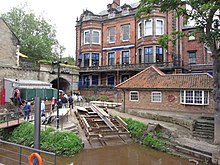
Bretton Hall is a country house in West Bretton near Wakefield, West Yorkshire, England. It housed Bretton Hall College from 1949 until 2001 and was a campus of the University of Leeds (2001–2007). It is a Grade II* listed building.

Temple Newsam, is a Tudor-Jacobean house in Leeds, West Yorkshire, England, with grounds landscaped by Capability Brown.

Lyme Park is a large estate south of Disley, Cheshire, England, managed by the National Trust and consisting of a mansion house surrounded by formal gardens and a deer park in the Peak District National Park. The house is the largest in Cheshire, and is recorded in the National Heritage List for England as a designated Grade I listed building.

The County Sessions House is a former courthouse in Liverpool, Merseyside, England. It stands at the bottom of Islington, to the east of the Walker Art Gallery, which now occupies the building. It is recorded in the National Heritage List for England as a designated Grade II* listed building.

The Aloft Liverpool Hotel, formerly the Royal Insurance Building, is a historic building located at 1-9 North John Street, Liverpool, Merseyside, England. It was built as the head office of the Royal Insurance company.

The Wool Exchange Building in Bradford, West Yorkshire, England is a grade I-listed building built as a wool-trading centre in the 19th century. The grandeur of its Gothic Revival architecture is symbolic of the wealth and importance that wool brought to Bradford. Today it is a Waterstones bookshop as well as a cafe.

Capesthorne Hall is a country house near the village of Siddington, Cheshire, England. The house and its private chapel were built in the early 18th century, replacing an earlier hall and chapel nearby. They were built to Neoclassical designs by William Smith and (probably) his son Francis. Later in the 18th century, the house was extended by the addition of an orangery and a drawing room. In the 1830s the house was remodelled by Edward Blore; the work included the addition of an extension and a frontage in Jacobean style, and joining the central block to the service wings. In about 1837 the orangery was replaced by a large conservatory designed by Joseph Paxton. In 1861 the main part of the house was virtually destroyed by fire. It was rebuilt by Anthony Salvin, who generally followed Blore's designs but made modifications to the front, rebuilt the back of the house in Jacobean style, and altered the interior. There were further alterations later in the 19th century, including remodelling of the Saloon. During the Second World War the hall was used by the Red Cross, but subsequent deterioration prompted a restoration.

Woolley Hall is a country house in Woolley, West Yorkshire, England. It is a Grade II* listed building.
Gilling Castle is a Grade I listed country house near Gilling East, North Yorkshire, England.
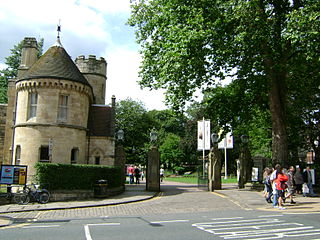
The York Museum Gardens are botanic gardens in the centre of York, England, beside the River Ouse. They cover an area of 10 acres (4.0 ha) of the former grounds of St Mary's Abbey, and were created in the 1830s by the Yorkshire Philosophical Society along with the Yorkshire Museum which they contain.

1 Hanover Square is a commercial building on the southwestern edge of Hanover Square in the Financial District of Lower Manhattan in New York City. It was the site of the United States' first cotton futures exchange, the New York Cotton Exchange.
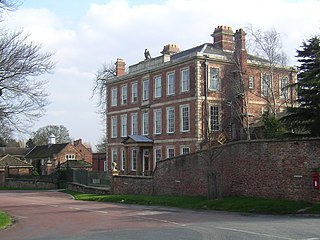
Middlethorpe Hall is a 17th-century country house standing in 20 acres of grounds in Middlethorpe, York, North Yorkshire, England. It is currently used as a hotel.

3–31 Northgate Street is a terrace of shops, offices and a public house on the west side of Northgate Street, Chester, Cheshire, England. All the buildings have a set-back ground floor with a covered walkway, are timber-framed in their upper storeys, and are listed buildings, being graded II* or II. The part of the terrace comprising numbers 5–31 is known as Shoemakers' Row, or Sadler's Row.
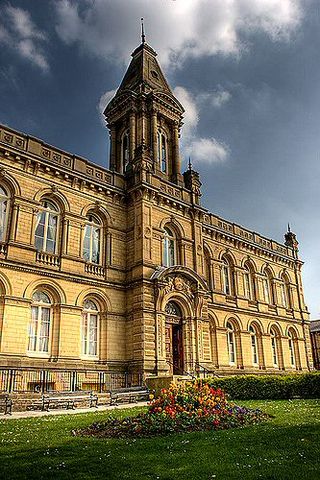
Victoria Hall, Saltaire is a Grade II* listed building in the village of Saltaire, near Bradford, West Yorkshire, England, built by architects Lockwood and Mawson.
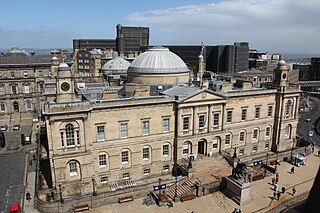
General Register House is an Adam style neoclassical building on Princes Street, Edinburgh, purpose built by Robert Adam between 1774 and 1788 as the headquarters of the National Archives of Scotland. It is a Category A listed building.
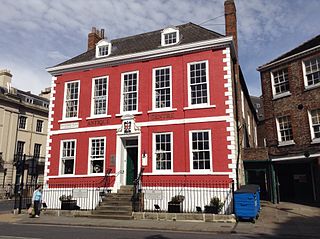
The Red House is a grade II* listed building in the city centre of York, in England.
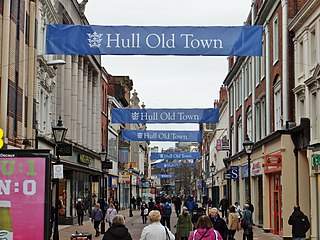
Whitefriargate is a pedestrianised street in the Old Town area of Kingston upon Hull, in the East Riding of Yorkshire, England. During the 20th century, it was one of the main shopping streets in the city centre, but some of the major stores have closed down, which has been attributed to out of town shopping centres. However, the Street still provides a useful link to and from the old town of Hull.

Grimethorpe Hall is a manor house in Grimethorpe, South Yorkshire, England. Built circa 1670 for Robert Seaton, it is thought to be in the style of York architect Robert Trollope. Around 1800 the hall passed to John Farrar Crookes of Tunbridge Wells. It was last used as a house in the 1960s and afterwards was purchased by the National Coal Board. The National Coal Board applied to demolish it in 1981 but, after a campaign by the Ancient Monuments Society, this was unsuccessful. The structure received statutory protection as a grade II* listed building in 1985.

Harkers is a pub in the city centre of York, in England.
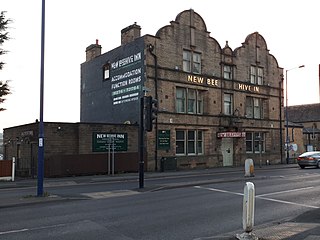
The New Beehive Inn is a former pub in Bradford, England. It was built by Bradford Corporation in 1901 to replace an existing public house of the same name that they had purchased in 1889 and demolished to widen a road. The corporation intended to run the pub itself but instead let it out and sold it in 1926. It has since been run by a number of brewery companies and individuals. The pub contained many features dating to its construction and a significant refurbishment in 1936 and was described by the Campaign for Real Ale as "one of the country's very best historic pub interiors".

